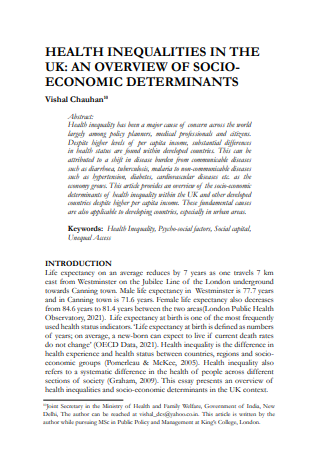Health inequalities in the UK
An overview of socio-economic determinants
DOI:
https://doi.org/10.54945/jjpp.v5i1.151Abstract
Health inequality has been a major cause of concern across the world largely among policy planners, medical professionals and citizens. Despite higher levels of per capita income, substantial differences in health status are found within developed countries. This can be attributed to a shift in disease burden from communicable diseases such as diarrhoea, tuberculosis, malaria to non-communicable diseases such as hypertension, diabetes, cardiovascular diseases etc. as the economy grows. This article provides an overview of the socio-economic determinants of health inequality within the UK and other developed countries despite higher per capita income. These fundamental causes are also applicable to developing countries, especially in urban areas







